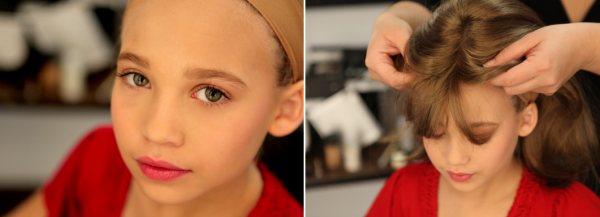By Kent Chao, founder of Nonprofit Investor
Our firm Nonprofit Investor did an analysis indicating that approximately $6 million worth of hair donations are unaccounted for each year by the West Palm Beach, Fla., charity Locks of Love. Children, celebrities, relatives of those in need, and countless others have been selflessly donating their hair to Locks of Love for over 15 years. Nonprofit Investor’s analysis raises significant questions about how the hair donations are used.
Locks of Love receives an estimated 104,000 hair donations per year. Locks indicates that up to 80% of this hair is unusable and that 6 to 10 hair donations are necessary to make one hairpiece. Based on these numbers sourced from Locks, the charity should produce a minimum of 2,080 hairpieces per year (104,000 hair donations * 20% usable hair donations / 10 hair donations per hairpiece). However, we’ve confirmed with the charity’s staff that the organization produced only 317 natural hairpieces in 2011. (Its IRS Form 990 figure of “430 wigs” includes synthetic wigs).
Put another way, according to Locks of Love’s statement , 317 natural hairpieces require no more than 3,170 hair donations, meaning that only 3% of 104,000 hair donations received make it into a hairpiece.
The 1,763 hairpieces that are unaccounted for are worth $6.6 million. (Locks states that the retail value of a natural hair wig is between $3,500 to $6,000 and costs $1,000 to manufacture). While Locks discloses that it sold $572,997 of hair in 2011, this leaves $6.0 million of hair unaccounted for by the organization.
Comparisons to other organizations illustrate the significant difference in the use of hair donations:
- Locks of Love. 104,000 hair donations per year divided by 317 hairpieces produced in 2011 = 328 hair donations accepted to produce 1 wig.
- Pantene Beautiful Lengths. 65,000 hair donations per year divided by 3,500 hairpieces produced per year = 19 hair donations accepted to produce 1 wig.
In other words, it takes Locks of Love 17x as many hair donations to make each hairpiece. Additional organizations that accept donated hair include Ohio-based Wigs for Kids, Children with Hair Loss, and Michigan-based Wigs 4 Kids.
NPI provided Locks of Love with this specific analysis in February 2013 in order to verify the accuracy of our claims. Locks of Love indicated in an email that it “does not count, catalogue nor maintain lists of hair donations.” We also asked LoL how many hair donations are sold each year ($573,997 in 2011 reported on IRS Form 990). Locks responded: “As we do not catalogue hair donations, you might imagine that we also do not count unusable hair that is sold….”
It is unclear how it is possible for Locks of Love to sell more than half a million dollars worth of hair without knowing the quantity of hair sold. In regard to the figure of 2,000 donations per week cited by USA Today and the New York Times, Locks responded: “We are unaware of this “publicly available data” nor do we endorse it.” As a result of Locks’ inability to provide updated information, NPI relied upon the statements of Locks’ executive director as cited in USA Today to estimate the amount of hair donated each year only after reasonable and diligent efforts to obtain updated data.
Additional Concerns Raised by Nonprofit Investor:
- Declining Capital Efficiency. Locks of Love continues to build its balance sheet through fundraising and disclosed sales of $500,000 to $1 million of hair each year while $3.8 million in cash and investments remain idle on the balance sheet. With disclosed personnel and office expenses of less than $1 million per year and net assets of $6 million, NPI views six years of reserves to be an inefficient use of capital.
- Application Process for Receiving a Wig More Complex Than Peer Organizations. Locks of Love requires applicants to provide two letters of recommendation explaining why the child would benefit from a hairpiece. This requirement is not typical of peer organizations.
- Additional Potential Beneficiaries. While LoL states that the primary beneficiaries of its wigs are children with alopecia, many donors believe that the primary recipients are cancer patients. With extremely high levels of donations and available assets, LoL should be able to provide more wigs to children with alopecia or expand its scope to others in need, such as cancer patients.
Recommendation to Locks of Love:
NPI recommends that Locks of Love publicly disclose the amount of hair donations it receives each year, how many are used to produce wigs, how many are discarded, and how many are sold. NPI views number of hair donations accepted and number of wigs produced to be the two most critical business metrics for Locks of Love to track and disclose in order to provide accountability.
Recommendation for Prospective Hair Donors and Financial Donors:
NPI recommends that prospective donors to any nonprofit require clarity on how their donation will be utilized. By selecting the nonprofit that most closely aligns with the individual’s objectives, the same amount of resources can go a lot further.
About Nonprofit Investor:
NPI is a nonprofit organization with the mission of improving philanthropic capital allocation and nonprofit effectiveness through research and analysis. NPI research is produced by volunteers with due diligence expertise developed in industries such as private equity, management consulting, and investment banking and is available for free, public download. NPI is a 501(c)(3) tax-exempt charity that has evaluated 62 nonprofits, of which 35 have received a “BUY” rating, demonstrating clear impact with a high degree of transparency and 26 nonprofits have been rated “NEUTRAL”, receiving suggestions on how to improve operations or transparency. NPI’s first “SELL” rating raises serious questions about Locks of Love’s operations and finances.
Full report: http://www.nonprofitinvestor.org

